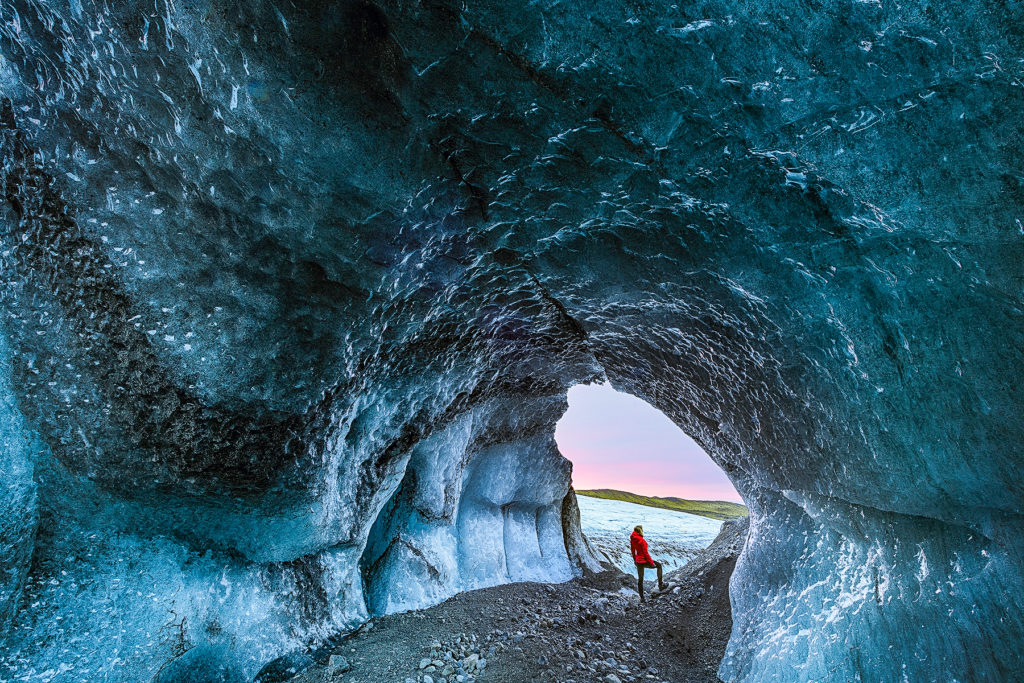
Skaftafell is a nature reserve within the larger Vatnajökull glacier National Park. Here you’ll find stunning glaciers, interspersed with lush areas, waterfalls and ice caves. Read more here.
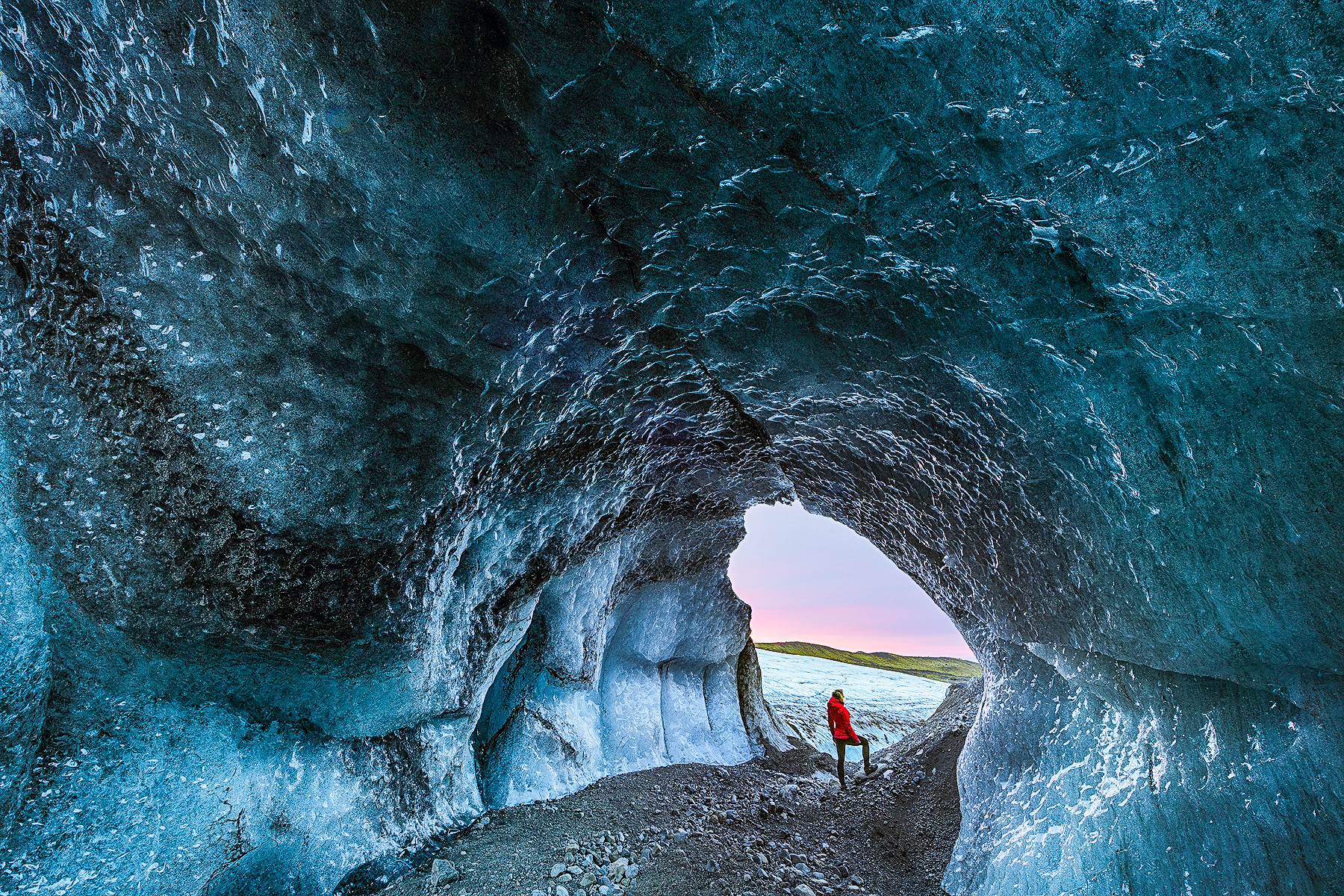
Skaftafell Nature Reserve: The Icelandic Alps
Skaftafell Nature Reserve is found in the southeast corner of Iceland. From 1967 and up until 2008 it was its own national park, but in 2008 a new and much larger national park was established, Vatnajökull National Park, that includes all of the former Skaftafell National Park but also a large portion of the eastern part of Iceland.
Vatnajökull, or the Lake Glacier, is the largest glacier to be found in all of Europe. The national park includes the entire glacier, and some of its surrounding area, stretching far north towards Lake Mývatn. Vatnajökull currently makes up 8% of Iceland’s size, but with climate change it is quickly retreating, a fact that is very visible in the Skaftafell region.
Skaftafell’s nature can be likened to the Alps, majestic snowy peaks tower over sandy plains, interspersed with green moss and low vegetation. The landscape has been moulded by the contrasting forces of ice and fire, with the interplay between volcanic activity and the glacier ice. When volcanoes erupt underneath the large sheet of ice and a large amount of the ice melts all at once, a phenomenon called jökulhlaup occurs. Basically, a tsunami of water comes crashing down, wiping everything in its path with it. Therefore the area is surrounded by a sandy wasteland, giving the area an otherworldly and somewhat desolate feel. The last time such an incident happened here was during a volcanic eruption in 1996, when there was a 13 day volcanic eruption in Gjálp underneath Vatnajökull glacier. 3 square kilometres of ice melted, and 45,000 cubic metres of water came bursting out each second at the peak of the eruption. An enormous bridge that crossed the sands in south Iceland was swept away, with only 2 mangled steel bars left behind as a reminder of the massive flood and the strength of the water.
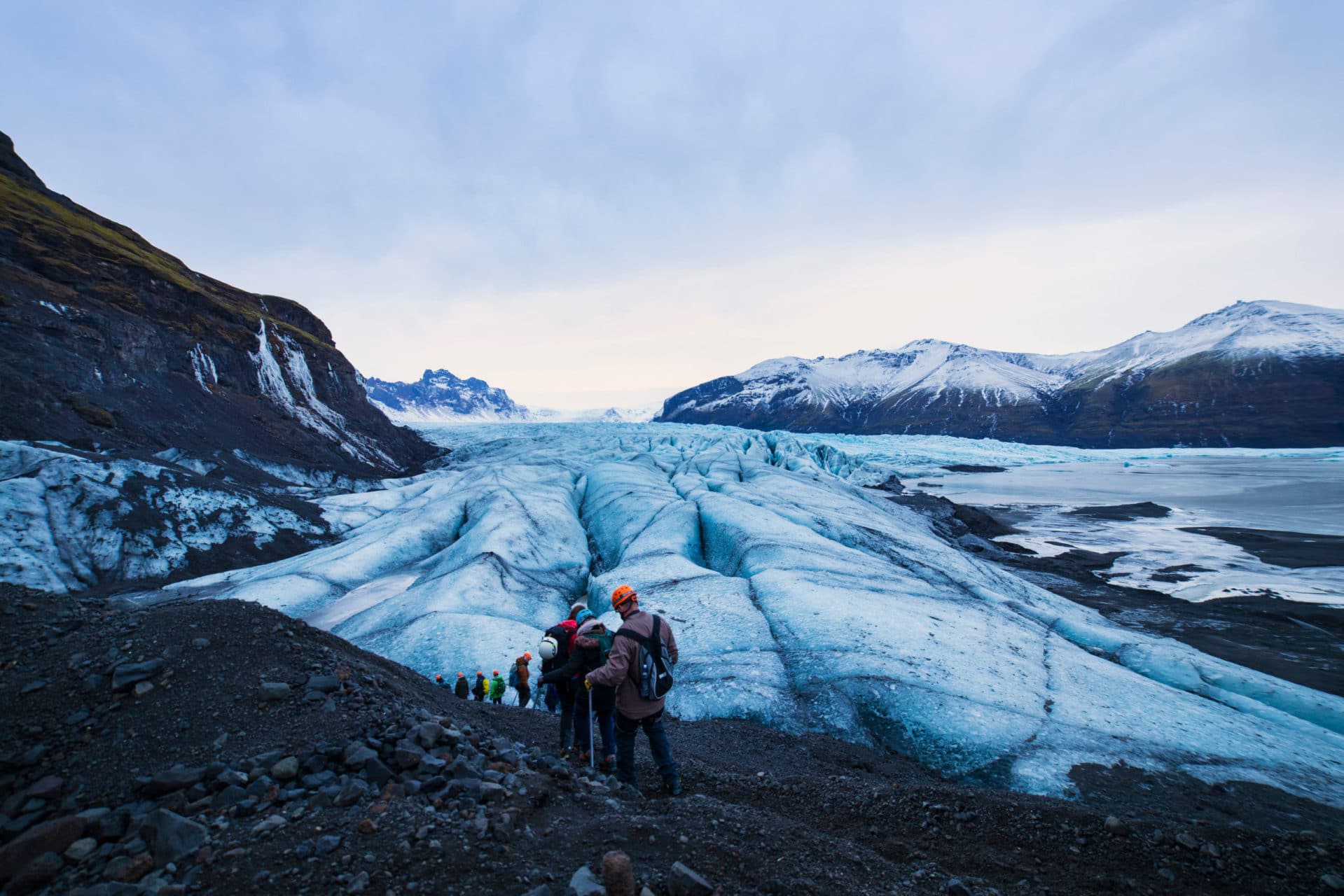
Within the area of Skaftafell visitors can see Iceland’s highest peak, Hvannadalshnúkur, and if they are willing to put in the effort, they can also visit the country’s tallest waterfall, Morsárfoss. Another waterfall, Svartifoss or the Black Falls, is easier to reach and a popular attraction. The white water falling down makes a stark contrast to the black basalt columns that surround it. Svartifoss is only about a 30 minute walk from the information centre in Skaftafell, whereas the hike to Morsárfoss would take several hours.
Hiking is one of the most popular activities in Skaftafell, and seeing as the region contains the largest glacier in the country, then of course there are several glacier hiking options to choose from.
The glaciers present many dangers to those who are unfamiliar with them, so it is important to always go with a guide that knows the area and the dangers to look out for. Hikers will need some special equipment as well, including crampons, harnesses and ice axes. A helmet is also needed, especially if ice caves are being explored.
Those who only want to have a taste of the glacier can choose to go on a 3 hour hiking tour, that will give them a good insight into the glacier itself and basic knowledge on how to use the equipment.
Check our Skaftafell Glacier Hike | 3 Hour Expedition. (here)
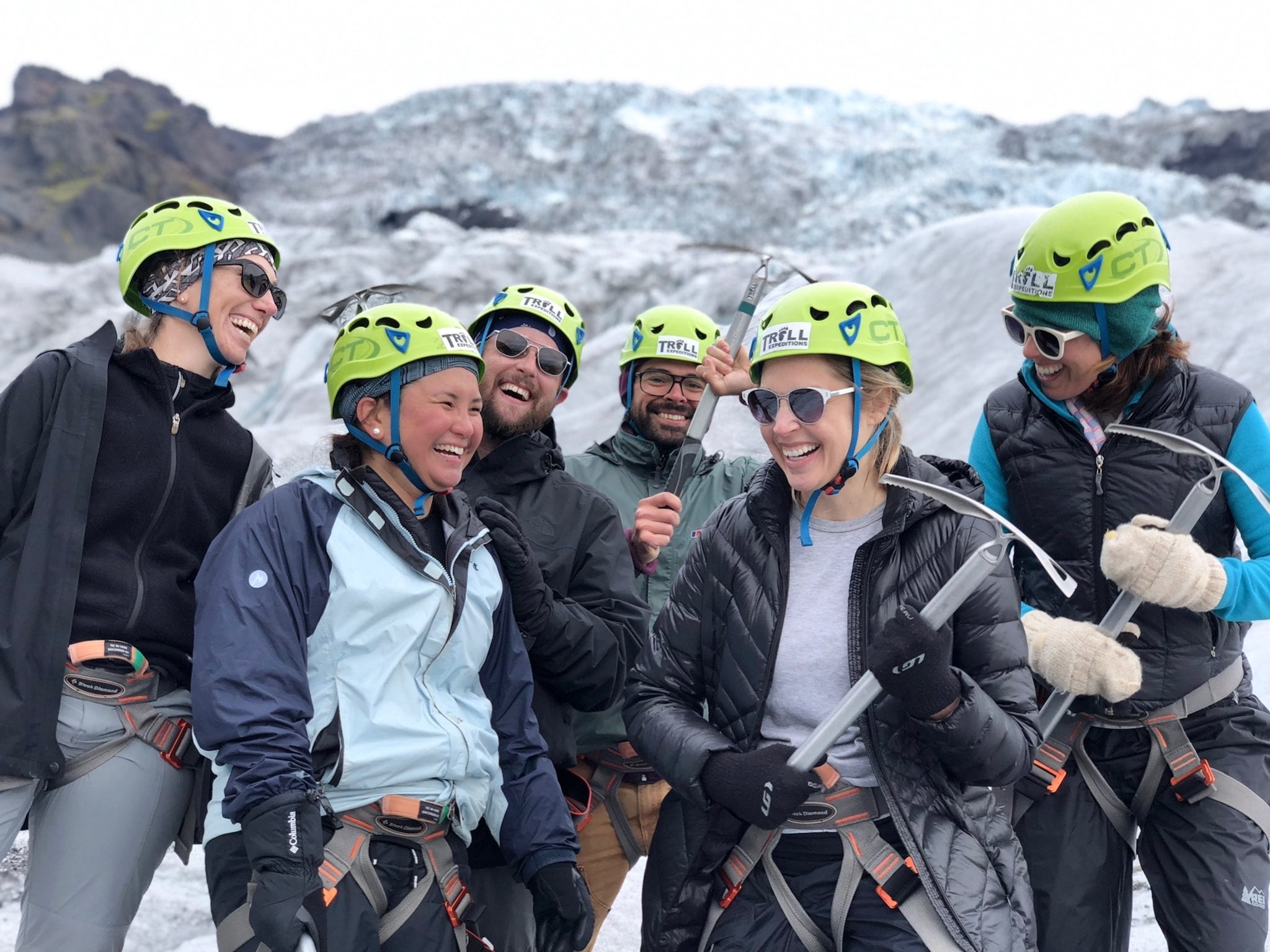
In wintertime it is possible to explore natural glacier ice caves as well. These ice caves are formed in the summertime as the glacier melts in higher temperatures, and the meltwater carves its way through the ice. When winter arrives and temperatures drop, the rivers decrease in volume and leave behind beautiful caves, big enough for people to enter and explore the ice formations within. The caves always vary in size, shape and location, and change daily according to weather. The ice has varying quality to it, sometimes it’s full of air bubbles or volcanic ash, but beautiful blue ice can also be found within these caves.
Check our Skaftafell Blue Ice Cave Adventure & Glacier Hike (here)
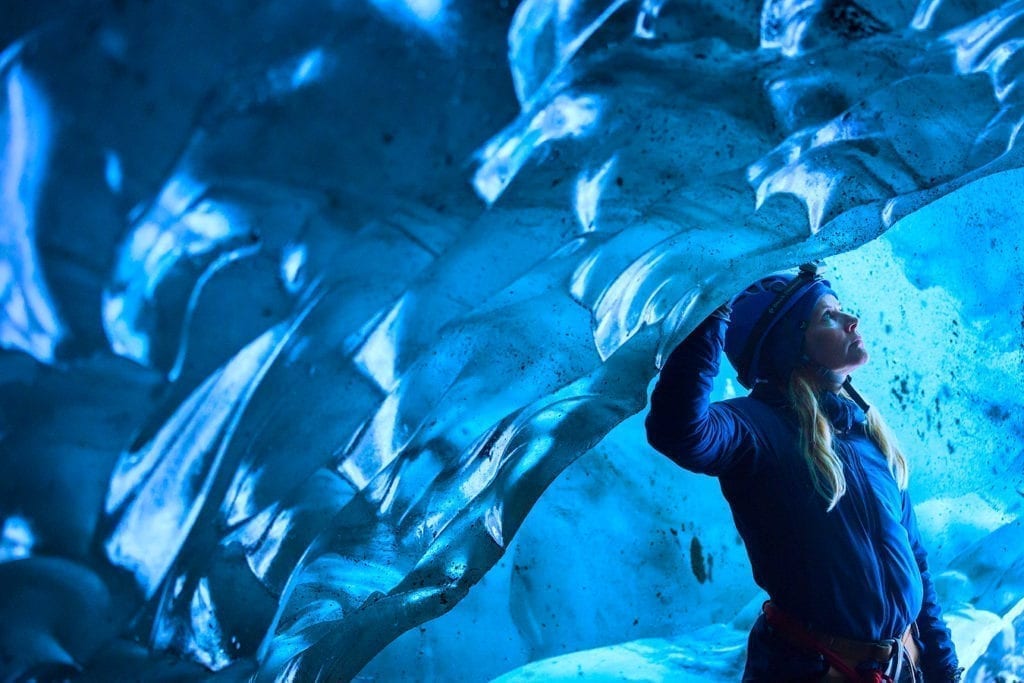
When the sun hits the ice, the ice absorbs all the other colours, and only the blue colour is reflected to our eyes. So even though the ice is completely see-through and clear, when there is a large mass of it then it appears to be blue – much like the clear water in the ocean appears blue due to the large amount of water. The thicker the ice, and more compressed it is, the bluer it seems. This blue colour is visible through many of the cracks and crevasses found on the glacier, and the longer you spend on the glacier, the more you’ll find out about its impressive beauty. On an extended adventure hike, you can go all the way to the wall of Falljökull glacier, and get impressive views over Skaftafell.
Check our Skaftafell Blue Ice Winter Wonderland | 5 Hour Hike. (here)

For those wanting to try something different, and feel like James Bond, there is the option to try ice climbing. The Bond movie Die Another Day was shot at Svínafellsjökull glacier that’s within Skaftafell. Bond wasn’t the only famous character to step foot on this glacier, as the films Batman Begins and Interstellar were also shot here. Perhaps the glacier’s greatest claim to fame however is standing in for ‘North of the Wall’ in the series Game of Thrones.
Check our Ice Climbing & Glacier Hike from Skaftafell. (here)
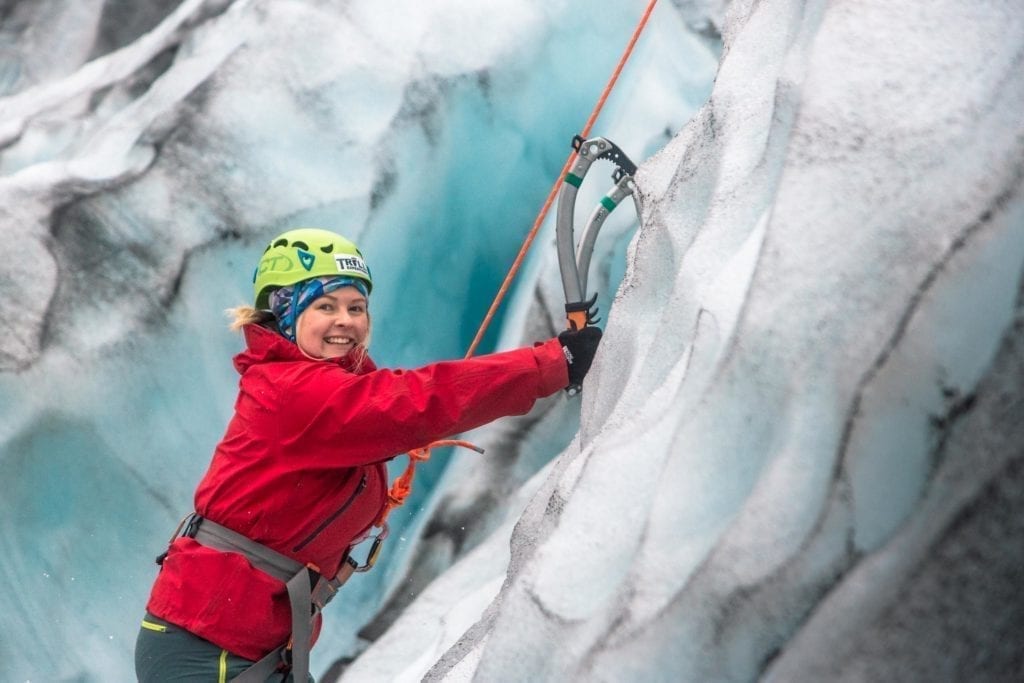
No matter how you decide to spend your time within Skaftafell, you’re sure to be blown away by the sheer natural beauty that surrounds you. There is a lovely campsite in the area with an information centre that can advise you on which hikes to take, as well as a handful of guesthouses and hotels that offer some dining options. No large towns or supermarkets are in the area, but Skaftafell is situated between the towns Kirkjubæjarklaustur (Klaustur for short) and Höfn í Hornafirði (Höfn for short). There is about a 50 minute drive to Klaustur, but close to a 2 hour drive to Höfn.
Luckily, the region is also famed for its agreeable weather. The mountainsides often protect visitors from the wind and little pockets of warmer weather can be found here, even whilst standing on the top of a glacier. Still, be sure to bring layers of warm clothes and check the weather forecast, this is Iceland after all and the weather changes every 5 minutes!
Tours mentioned in this article are:
- Skaftafell Blue Ice Cave Adventure & Glacier Hike. Click here to see it.
- Skaftafell Glacier Hike | 3 Hour Expedition. Click here to see it.
- Skaftafell Blue Ice Winter Wonderland | 5 Hour Hike. Click here to see it.
- Ice Climbing & Glacier Hike from Skaftafell. Click here to see it.